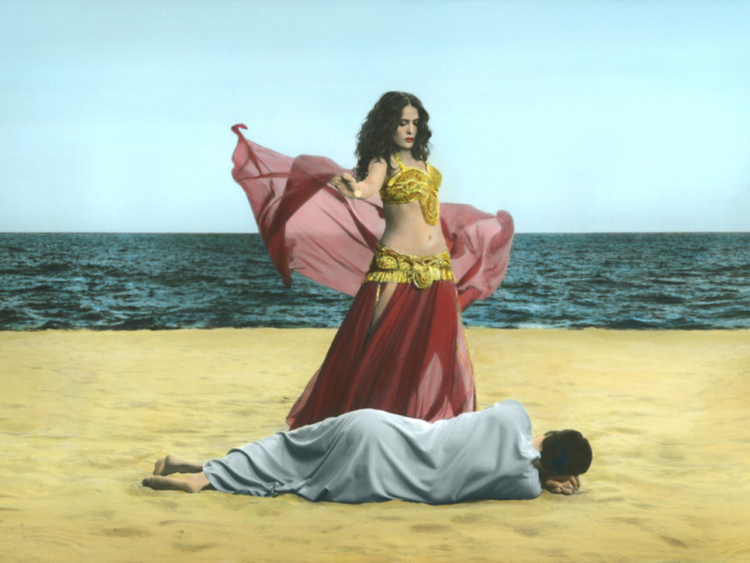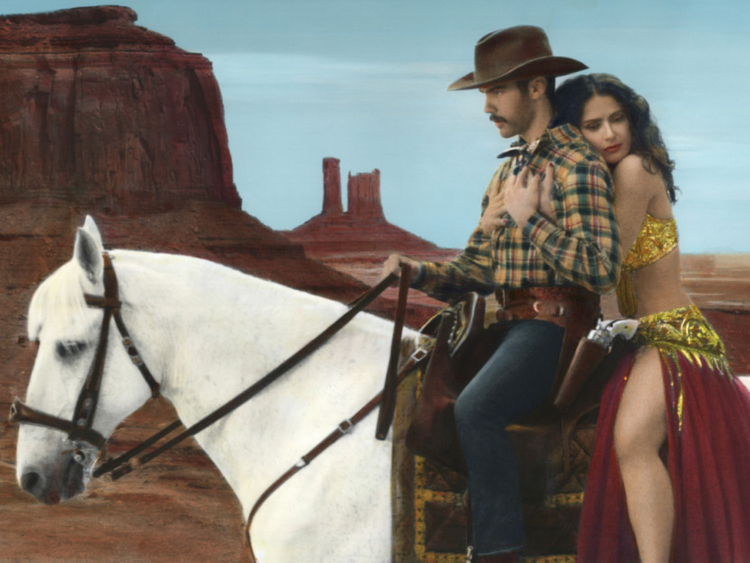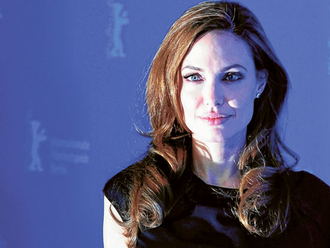
New York-based Egyptian artist Youssef Nabil’s latest show, “I Saved my Belly Dancer”, features a video and a series of related photographic works that express his feelings about an important part of Egyptian culture that is slowly disappearing.
The 12-minute video, starring Hollywood actress Salma Hayek, is a poetic depiction of the artist’s fascination with belly dancers and his anxiety over the fact that this art form is dying. Like all Nabil’s work, the film is inspired by Egyptian cinema of the 1950s. It shows a sleeping man (played by Tahar Rahim) dreaming of his old glamorous Egypt. A last remaining belly dancer (Hayek) comes to comfort him and tell him that his world has not vanished. She does a last dance for him, before he rides off with her in cowboy style to the American desert where the artist now lives.
There are no dialogues, but through the surrealistic and symbolic imagery the artist tells a moving story of loss, displacement, memory, exile and new beginnings. He also comments on the shifting perceptions of the position of women in the region, and the objectification of their bodies that is changing attitudes towards a respected ancient art form.
The photographic artworks, created in parallel with the video shoot, are done in the artist’s signature style, where he colours black and white photographs by hand, mimicking a technique that was used for making posters and billboards of Egyptian films in the 1950s.
“I feel disturbed by the news of belly dancers being imprisoned and dancing venues being closed down in Egypt because it is considered vulgar now. The cultural identity of Egypt is changing, and the sad thing is that gradually this transformation is becoming accepted as normal. Belly dancing has been a part of our culture since the time of the Pharaohs, and as my photographs show people from the entire region came to Egypt to enjoy this art form. This body of work speaks about my relationship with my country, and how important belly dancing is to me and to the identity of Egypt. It is about the memories that we choose to save even if they are no longer part of our reality. I remember belly dancing being the most eagerly awaited finale performance at wedding ceremonies and other community celebrations; and I choose to save that memory and to live with it as my reality, wherever I am. The images of the cowboy riding away with the belly dancer is inspired by old Western movies and the typical images that I like of America, my current home,” Nabil says.
Jyoti Kalsi is an arts-enthusiast based in Dubai.
“I Saved my Belly Dancer” will run at The Third Line, Alserkal Avenue, until March 5.














